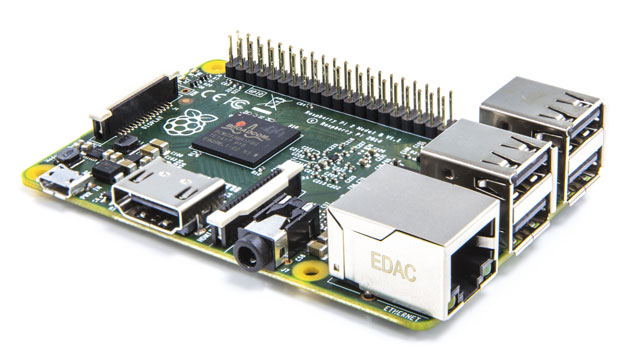|
|
 Buy on AliExpress.com Buy on AliExpress.com
DCEmu.Com is a site that brings you the very latest in Gaming news that isnt console specific and the latest Current Gen news from around the world, Part of the
DCEmu Homebrew & Gaming Network.
THE LATEST NEWS BELOW
|
February 22nd, 2015, 22:31 Posted By: wraggster
When you think of a doorbell, you typically don’t think of anything very complicated. It’s a button that rings a bell inside your home. That’s about it. [Ahmad] decided he wanted to turn his doorbell up to eleven (Google Doc) with this build. Using a Raspberry Pi, he was able to cram in loads of features.
When the doorbell button is pressed, many different events can be triggered. In the demo video, [Ahmad] shows how his phone receives a text message, and email, and a tweet. The system can even be configured to place a voice call via Google Hangouts using a USB microphone. [Ahmad] demonstrates this and shows how the voice call is placed almost instantly when the button is pressed. This may be a bit overkill, but it does demonstrate many different options depending on your own needs.
For the hardware side of things, [Ahmad] purchased a wireless doorbell. He opened up the ringer unit and hooked up the speaker wires to a couple of pins on the Raspberry Pi through a resistor. The doorbell unit itself is powered off of the 3.3V supply from the Pi. The Pi also has a small LCD screen which shows helpful information such as if the Internet connection is working. The screen will also display the last time and date the doorbell was pressed, in case you weren’t home to answer the door.
On top of all of that, the system also includes a Raspberry Pi camera module. This allows [Ahmad] to take a photo of the person ringing the doorbell as a security measure. He can even view a live video feed from the front door by streaming directly to YouTube live. [Ahmad] has provided a link to his Pi image in the Google Doc so others can use it and modify it as they see fit.
http://hackaday.com/2015/02/22/raspb...ully-featured/
To read more of the post and Download, click here!
 Join In and Discuss Here Join In and Discuss Here
Submit News and Releases Here and Contact Us for Reviews and Advertising Here |
|
 |
|
|
|
February 22nd, 2015, 21:54 Posted By: wraggster
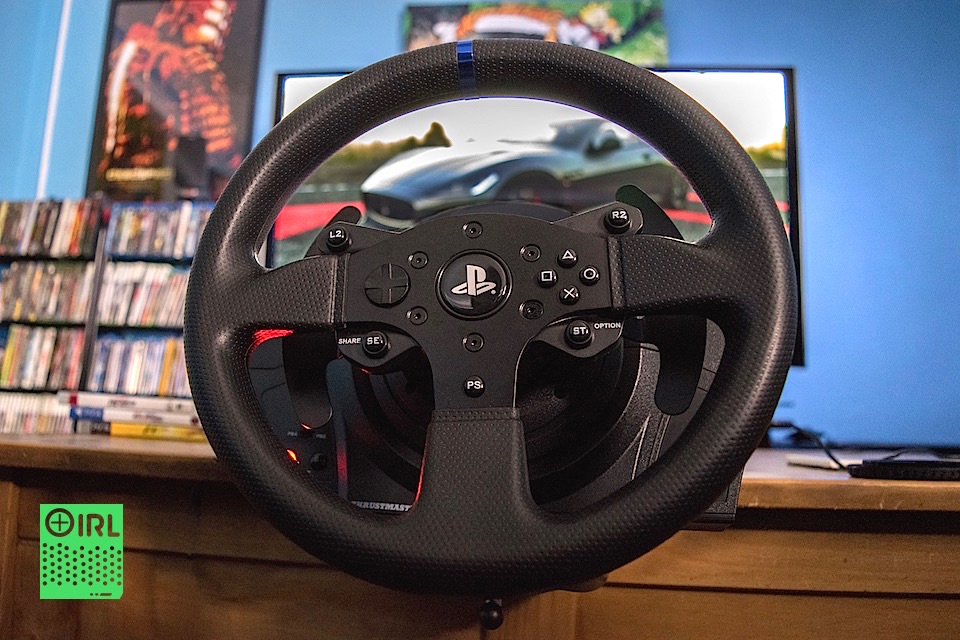
Let's get this out of the way up front: The market for the Thrustmaster T300RS isincredibly narrow. At $400 (the price of a PlayStation 4!) it's far beyond an impulse buy and demands you're taking every aspect of your living room racing experience Very Seriously. That's something I discovered when the company sent me a demo unit to try.
You see, at Casa de Seppala, my couch sits about 6 feet from my 65-inch TV. In between those two are an area rug and a coffee table I got for $75 on Craigslist. It's an awesome setup for movies and every other game I've played, but when it came time to put the T300RS through its paces, I couldn't figure out if the wheel was ill-suited to my space or vice versa.
http://www.engadget.com/2015/02/21/t...-racing-wheel/
To read more of the post and Download, click here!
 Join In and Discuss Here Join In and Discuss Here
Submit News and Releases Here and Contact Us for Reviews and Advertising Here |
|
 |
|
|
|
February 20th, 2015, 00:25 Posted By: wraggster
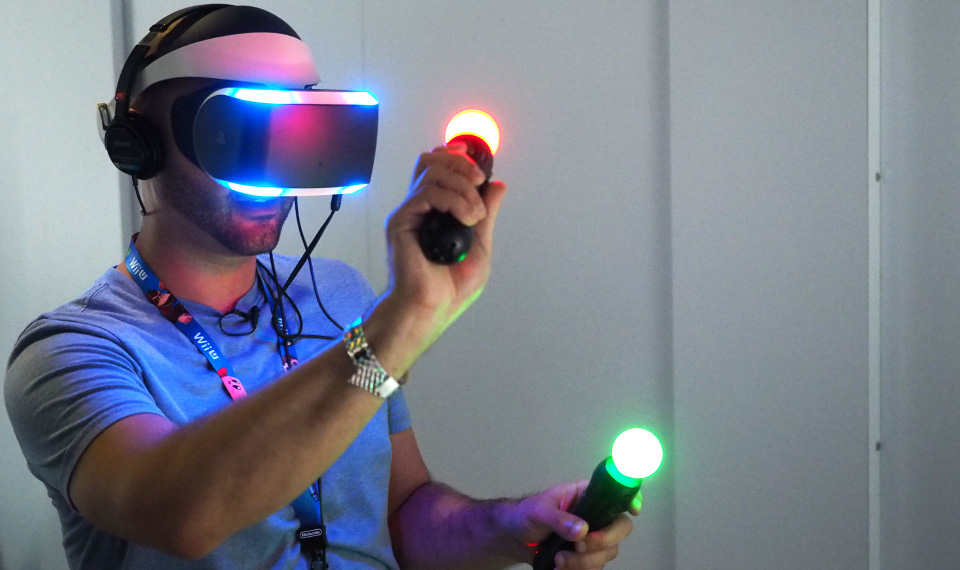
Tim Sweeney knows the video game industry. He started Epic Games, the studio behind huge franchises like Gears of War, Unreal Tournament, and Infinity Blade, and the widely used game development software, Unreal Engine. He's hailed as a founding father of the modern gaming industry, having started Epic Games in 1991 while still in college, and he's a technical genius with keen business sense. So when he says virtual reality is going to change the world, we're listening.
"There are some amazing things happening in VR right now, and a lot of them haven't seen the light of day publicly at all," Sweeney said during a phone interview this week. "But next year is going to just be a watershed time for VR."
http://www.engadget.com/2015/02/19/v...5-tim-sweeney/
To read more of the post and Download, click here!
 Join In and Discuss Here Join In and Discuss Here
Submit News and Releases Here and Contact Us for Reviews and Advertising Here |
|
 |
|
|
|
February 18th, 2015, 23:41 Posted By: wraggster

Video games don't seem to be going anywhere, but the same can't be said for institutions that've wanted to enshrine them. The latest effort comes by way of the folks at The Strong, also known as The National Museum of Play. The New York-based outfit will consider basically any type of game for its freshman class of World Video Game Hall of Fame honorees, be it arcade, console, computer, handheld or mobile. All you need to do is submit your pick on The Strong's website and make a case for why it's your choice. How does the advisory committee choose from there? Well, that's not exactly a scientific process.
http://www.engadget.com/2015/02/18/w...-hall-of-fame/
To read more of the post and Download, click here!
 Join In and Discuss Here Join In and Discuss Here
Submit News and Releases Here and Contact Us for Reviews and Advertising Here |
|
 |
|
|
|
February 17th, 2015, 22:00 Posted By: wraggster
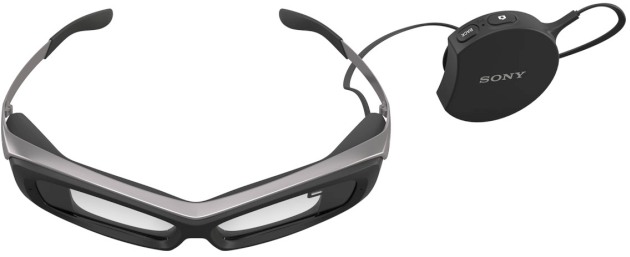
Sony has toyed around with ideas like a clip-on headset to compete with Google Glass, but its initial entry into augmented reality wearables is this pair of glasses. It's not a consumer product yet, but the SmartEyeGlass SED-E1 Developer Editionpreviewed a few months ago is coming to 10 countries in March, for $840 (US), 670 (EUR), or 100,000 (yen). While we wait for Microsoft's HoloLens and a revamped version of Glass, Sony is using "holographic waveguide technology" in 3mm AR lenses to put information directly in the wearer's eyeline. A (after the break) will give you an idea of the capabilities, but it looks a lot more like Glass than Hololens, with simple green monochrome text and diagrams displayed at up to 15fps. There's also a 3MP camera tucked inside that can take still pictures or video, which developers can use its images in their apps.
http://www.engadget.com/2015/02/17/s...smarteyeglass/
To read more of the post and Download, click here!
 Join In and Discuss Here Join In and Discuss Here
Submit News and Releases Here and Contact Us for Reviews and Advertising Here |
|
 |
|
|
|
February 17th, 2015, 00:10 Posted By: wraggster
We can never seem to get enough garage door hacks around here. [Tanner’s] project is the most recent entry into this category. He’s managed to hook up a Raspberry Pi to his garage door opener. This greatly extends his range to… well anywhere with an Internet connection.
His hack is relatively simple. He started with the garage door opener remote. He removed the momentary switch that was normally used to active the door. He bridged the electrical connection to create a circuit that was always closed. This meant that as long as the remote had power, the switch would be activated. Now all [Tanner] had to do was remove the battery and hook up the power connectors to his Raspberry Pi. Since the remote works on 3.3V and draws little current, he is able to power the remote directly from the Pi. The Pi just has to turn its pin high momentarily to activate the remote.
The ability to toggle the state of your garage door from anywhere in the world also comes with paranoia. [Tanner] wanted to be able to tell if the door is up, down, or stopped somewhere in the middle while he was away from home. He also wanted to use as little equipment as possible. Since he already had an IP camera in the garage, he decided to use computer vision to do the detection.
He printed off two large, black shapes onto ordinary white computer paper. One was taped to the top of the door and one to the bottom. A custom script runs on the Pi that grabs the latest image from the camera and usesOpenCV to detect the shapes. If both shapes are visible, then the script can assume the door is closed. Otherwise, it’s likely open. This makes it easier for [Tanner] to know if the door is opened or closed without having to check the camera himself.
Can’t get enough garage door hacks? Try these on for size.
http://hackaday.com/2015/02/15/a-ras...e-door-opener/
To read more of the post and Download, click here!
 Join In and Discuss Here Join In and Discuss Here
Submit News and Releases Here and Contact Us for Reviews and Advertising Here |
|
 |
|
|
|
February 17th, 2015, 00:01 Posted By: wraggster
“You have to do mobile gaming to be successful in the long-term.”
This is how Dan Doughty, director of business development at Snail Games USA, introduces the company’s upcoming mobile-meets-home console device, the OBox.
Designed to bridge the gap between the graphical prowess of the PS4 and Xbox One and the pick-up-and-play convenience of smartphones, the OBox is built on an Android operating system.
It’s not an original concept – from the Ouya to the Mad Catz MOJO, Android boxes are now a common sight.
But Doughty says that the OBox will stand apart by providing a level of performance akin to a fully-fledged console.
“The problem with the Ouya was that it was taking existing mobile games and blowing them up onto a big screen,” he states. “It wasn’t capable of processing high-definition video the way video games need to be when they’re blown up onto a big screen.”
This focus on high-quality gaming is best seen in the OBox’s potential display output; the machine features support for 4K video.
The machine is also modular, allowing consumers to swap out older components for improved hardware in the future.

It’s a bold claim that an Android-powered device could take on the new consoles from the two biggest companies in games – but Doughty says the OBox’s ability to be upgraded will see it come to the forefront for players as the PS4 and Xbox One start to age.
“The Xbox One is already two generations behind, as is the PS4, in processing data and video,” he says.
“They will four or five generations behind by their end-of-life. That’s not acceptable in a technology-driven world.
“Video games used to be synonymous with pushing the leading edge of technology – that’s really fallen by the wayside. Now, PCs are pushing video gaming because the consoles don’t do it, and mobile devices aren’t able of doing it.
“We’re trying to push the technology again in a way that it’s not being pushed.”
“It will be a year or two before you move a franchise level product like Call of Duty over to an Android system and make it look as good as it does on Xbox One."
Dan Doughty, Snail Games
Of course, it’s not all about the technology.
“Content is key, so we’re driving content very hard,” says Doughty.
Having announced Snail’s first deal with mobile studio Gameloft, Doughty says there are ‘many, many more’ partners to be revealed pre-E3.
There’s also the firm’s own hit property, Age of Wushu. The MMO currently sees more than 5.5 million monthly users, and is set to come to the OBox.
Doughty states that bigger outlets and titles will move across as they realise the potential of Android.
“It will be a year or two before you move a franchise level product like Call of Duty over to an Android system and make it look as good as it does on Xbox One,” he says.
The lower pricing of Android titles will also be a big draw for consumers, Doughty argues.
“You’ll see things like Asphalt 8 doing surprisingly well because they’re all of the things that peopleare looking for, without the overhead of having to pay $50 to $70.
“It doesn’t make sense in this world having to pay that kind of money simply because of the format you’re developing for.”
Doughty concludes that high-end Android systems such as the OBox mark a change in consumer demand.
“It’s not about what we want to give the market; it’s what the market wants from us.”
http://www.mcvuk.com/news/read/obox-...ox-one/0145268
To read more of the post and Download, click here!
 Join In and Discuss Here Join In and Discuss Here
Submit News and Releases Here and Contact Us for Reviews and Advertising Here |
|
 |
|
|
|
February 15th, 2015, 23:50 Posted By: wraggster
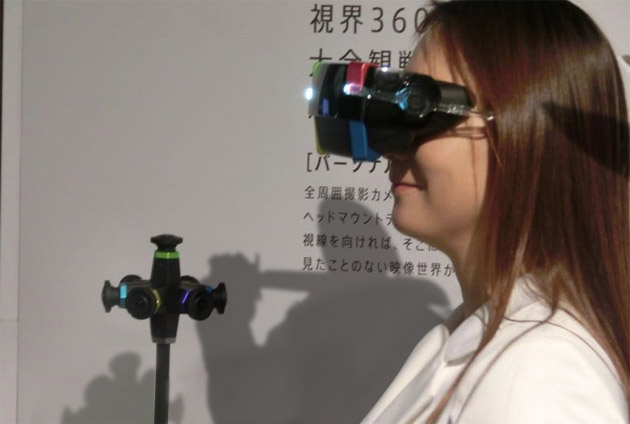
Panasonic is the latest company to throw its real hat into the virtual reality fray, after showing off a prototype headset that will compete with rival products from Samsungand LG. The goggles were shown at a press event in Japan this week, and house an OLED display with a 90-degree viewing angle, capable of video unto 75 frames per second. The glasses use ear-hooks to support themselves, and were demonstrated alongside an omnidirectional camera, similar to Samsung's Project Beyond. Of course, this doesn't rule out gaming use (which is mostly where Oculus and Sony are duking it out), but given Panasonic's heritage in displays and image capture, it's not hard to imagine that immersive content will be the primary use case (no word on what inputs there are etc.). The company reportedly said that the camera-part is being built with the 2020 Tokyo Olympics in mind. While that's still a few years away, we're hoping all the signs are suggesting we won't have to wait quite so long for more details on the when this headset might become reality.
http://www.engadget.com/2015/02/13/p...cs-vr-headset/
To read more of the post and Download, click here!
 Join In and Discuss Here Join In and Discuss Here
Submit News and Releases Here and Contact Us for Reviews and Advertising Here |
|
 |
|
|
|
February 12th, 2015, 23:31 Posted By: wraggster
[Tim] was looking for a way to control his power outlets using WiFi. He looked into purchasing a WeMo but he realized that he could build something even better with more bang for his buck. He started out by purchasing a five pack of Etekcity wireless remote control outlet switches. These are kind of like the WeMo, only they aren’t controlled via WiFi. Instead, they come with an RF controller. [Tim] just needed to find a way to bridge the gap between the RF remote and WiFi.
[Tim] decided to use a Raspberry Pi as the brains of the controller. He also purchased a SMAKN 433MHz RFreceiver and transmitter for communicating with the wireless outlet switches. The wiring for the modules is pretty simple. There are only four wires. There are power and ground wires for each module. Then the transmitter needs two GPIO pins while the receiver only needs one.
[Tim] began with a fresh installation of Raspbian. He then installed Wiring Pi, which gives you the ability to interface with the GPIO pins in a way that is similar to Arduino. He also installed Apache and PHP to create a web interface for switching the outlets. The last step was to write some custom software. The software included a script that allowed [Tim] to sniff out the controls of his RF remote. The correct codes are entered into the “toggle.php” file, and everything is set. All [Tim] has to do now is browse to his Pi’s web server and click a button. All of the custom code is available via git.
http://hackaday.com/2015/02/11/wifi-...-raspberry-pi/
To read more of the post and Download, click here!
 Join In and Discuss Here Join In and Discuss Here
Submit News and Releases Here and Contact Us for Reviews and Advertising Here |
|
 |
|
|
|
February 12th, 2015, 23:18 Posted By: wraggster
MCV can today reveal that the UK video games market generated £3.944bn in consumer spending during 2014.
The number is 13 per cent higher than 2013’s figure, when the UK market reached £3.48bn.
This year’s data was calculated by MCV with trade body Ukie and a number of key data partners - and was unveiled this morning at a special event in London.
The total includes £1.048bn for digital console and PC content (based on IHS estimates), £915m on console hardware (Chart-Track figures), £106.8m on pre-owned software (Kantar Worldpanel) and £69m on toys (NPD figures). For the full breakdown, check out the infographic below.
The best-selling video game soundtrack of 2014 was ‘The Music of Grand Theft Auto V’, the most popular video game-based movie was Need for Speed, while the best-selling video game-based book was Minecraft: The Official Construction Book.
“£3.944bn is the second-highest figure in games industry history and just narrowly misses out on eclipsing the £4bn generated in 2008 when Guitar Hero, Wii and DS ruled the charts,” said MCV editor Christopher Dring.
“Almost every sector of the market is in growth, and 2015 is set to be even better, with new blockbusters such as Uncharted, Zelda, Halo and Star Wars; highly anticipated new technologies such as Oculus Rift and Steam Machines, plus new business models around games subscriptions and streaming. It’s a good time to be involved in the video games business.”
Ukie CEO Dr Jo Twist commented on the evaluation “It's fantastic the see the consumer market thriving and growing. Impressive figures like these help reinforce the importance of our sector to policy makers and the media, strengthening our standing globally as a key market in the digital economy.”
You can see more detail behind the data in tomorrow’s edition of MCV (Friday, February 13th).
http://www.mcvuk.com/news/read/uk-ga...n-2014/0145088
To read more of the post and Download, click here!
 Join In and Discuss Here Join In and Discuss Here
Submit News and Releases Here and Contact Us for Reviews and Advertising Here |
|
 |
|
|
|
February 8th, 2015, 21:53 Posted By: wraggster
For the past month, the Raspberry Pi 2 has only been available to the Raspi Foundation, and for about 2 weeks, select members of the media who have worn the Raspi 2 on a necklace like [Flavor Flav] wears a clock. That’s not many people with real, working hardware and when a product is released, the great unwashed masses will find some really, really weird bugs. The first one to crop up is a light-sensitive reset of the Raspberry Pi 2.
[PeterO] on the Raspberry Pi forums took a few pictures – with flash – of a running Raspberry Pi 2. It took a little bit of deduction to realize that a camera flash will either reset or turn the Raspi 2 off. Yes, this is weird, and experiments are ongoing.
confirms the finding and a reddit thread offers an explanation. U16, a small chip located in the power supply part of the Raspi 2, is sensitive to light. Putting enough photons will cause the Pi to shut down or restart.
There’s still some research to be done, however, I can confirm a cheap green laser pointer will reset a Raspberry Pi 2 when the beam is directed at the U16 chip. This is the chip that is responsible, and this is not an EMP issue. This is a photon/light issue with the U16 chip. The solution to this bug is to either keep it in a case, or put a tiny amount of electrical tape over the chip.
Thanks [Arko] for staying up until an ungodly hour and sending this to me.
http://hackaday.com/2015/02/08/photo...aspberry-pi-2/
To read more of the post and Download, click here!
 Join In and Discuss Here Join In and Discuss Here
Submit News and Releases Here and Contact Us for Reviews and Advertising Here |
|
 |
|
|
|
February 7th, 2015, 20:45 Posted By: wraggster
Of all the vintage chiptune machines out there, the Commodore 64 is the most famous. Even 30 years later, there are still massive gatherings dedicated to eeking out the last cycle of processing power and graphics capability from the CPU and the infamous synth-on-a-chip, the SID. [Bob] wanted to build a SID jukebox. A C64 is capable of the job, but if you want to have every SID composition on an SD card and connect that to a network, a Raspberry Pi is the way to go.
The SID chip, in its 6581 or 8580 versions, is controlled directly by poking registers on the chip through the address and data busses. This means a lot of pins, too many for the original Raspi expansion header. That’s not a problem that can’t be solved with a few shift registers, though. The rest of the circuit is an LM386 audio amplifier, an LCD that displays the current song, and a can crystal oscillator for the SID.
Right now everything is wired up on a breadboard, but making this a Raspberry Pi hat would be a rather simple proposition. It’s only a matter of finding a SID with working filters, and if you can manage that, it’s a pretty easy build to replicate. Video below.
http://hackaday.com/2015/02/06/a-ras...pi-sid-player/
To read more of the post and Download, click here!
 Join In and Discuss Here Join In and Discuss Here
Submit News and Releases Here and Contact Us for Reviews and Advertising Here |
|
 |
|
|
|
February 5th, 2015, 21:13 Posted By: wraggster
While Samsung's Gear VR headset launched in early December in the U.S., folks abroad didn't have any official means of buying the headset to test their in-development applications. Only recently has Gear VR begun making its way to countries around the world, and it's doing so slowly. For developers who don't want to wait (or DIYers who don't want to buy), some smart folks have figured out how to emulate the headset using a development board with an IMU that's been flashed with the same firmware found on the Oculus Rift DK1 headset. Plugging the board into the Note 4 (the smartphone that powers Gear VR), results in the phone recognizing the IMU as the Gear VR headset, allowing developers to test their applications and even launch the "Oculus Home" environment, allowing access to official applications and content.
http://hardware.slashdot.org/story/1...l-reality-apps
To read more of the post and Download, click here!
 Join In and Discuss Here Join In and Discuss Here
Submit News and Releases Here and Contact Us for Reviews and Advertising Here |
|
 |
|
|
|
February 5th, 2015, 20:57 Posted By: wraggster
Watch out Microsoft and Sony, one of China’s biggest games companies will launch its first console in Europe in early 2016.
Snail Games is China’s fifth largest mobile phone service provider and the firm behind hit MMO Age of Wushu, which attracts over 5.5m monthly players.
Now, the company is preparing to launch its high-powered Android console, the OBox, which it unveiled to the world at CES last month.
“We’re trying to push the technology again in a way that it’s not being pushed,” said Dan Doughty, director for business development at Snail Games USA.
“Video games used to be synonymous with pushing the leading edge of technology – that’s really fallen by the wayside.
“Now PCs are pushing the video gaming environment because the consoles don’t do it, and mobile devices aren’t capable of doing it.”
He added: “The Xbox One and PS4 are already two generations behind in processing data and video. They will four or five generations behind by their end-of-life.
“That’s not acceptable in a technology-driven world.”
Doughty says that it will be a ‘year or two’ before games such as Call of Duty will be on these Android systems, and adds that the OBox offers more than its ‘limited’ rivals such as Ouya, as it allows gamers to swap out components like a PC and even supports 4K video.
Snail Games is also preparing a portable games machine and mobile phone hybrid called W3D, which works as a second controller for the console.
Doughty, a business development veteran who has held senior roles at various retail, technology and video game companies, told MCV the device will launch in the UK in early 2016 with a price to be determined.
http://www.mcvuk.com/news/read/chine...t-year/0144763
To read more of the post and Download, click here!
 Join In and Discuss Here Join In and Discuss Here
Submit News and Releases Here and Contact Us for Reviews and Advertising Here |
|
 |
|
|
|
February 5th, 2015, 20:43 Posted By: wraggster

If you suspected that Google Glass' change of leadership would also lead to a big change in the wearable technology itself, you made a pretty good guess. As part of a tell-all about Glass' troubles, the New York Times is claiming that project lead (and Nest CEO) Tony Fadell plans to redesign the head-mounted computer "from scratch." And unlike the original, you aren't likely to see any public beta testing -- in keeping with earlier pronouncements, one tipster says that Fadell won't release this next-gen device "until it's perfect." Just when that might happen is still up in the air, but the Nest exec's historical focus on shipping over experimentation hints that you won't have to wait years to try Glass 2 for yourself.
http://www.engadget.com/2015/02/04/g...-from-scratch/
To read more of the post and Download, click here!
 Join In and Discuss Here Join In and Discuss Here
Submit News and Releases Here and Contact Us for Reviews and Advertising Here |
|
 |
|
|
« prev
40
41
42
43
44
45
46
47
48
49
50
51
52
53
54
55
56
57
58
59
60
next » |
|
|
 Buy on AliExpress.com
Buy on AliExpress.com





